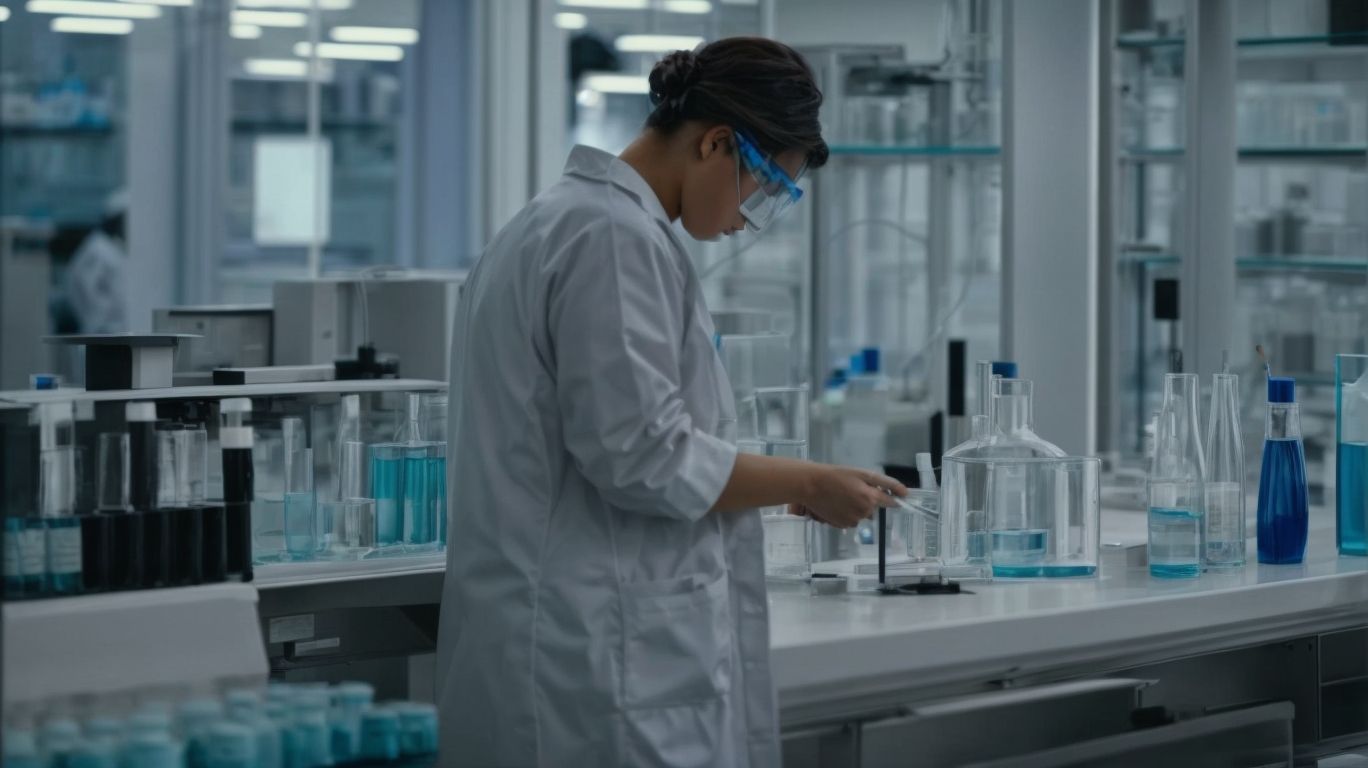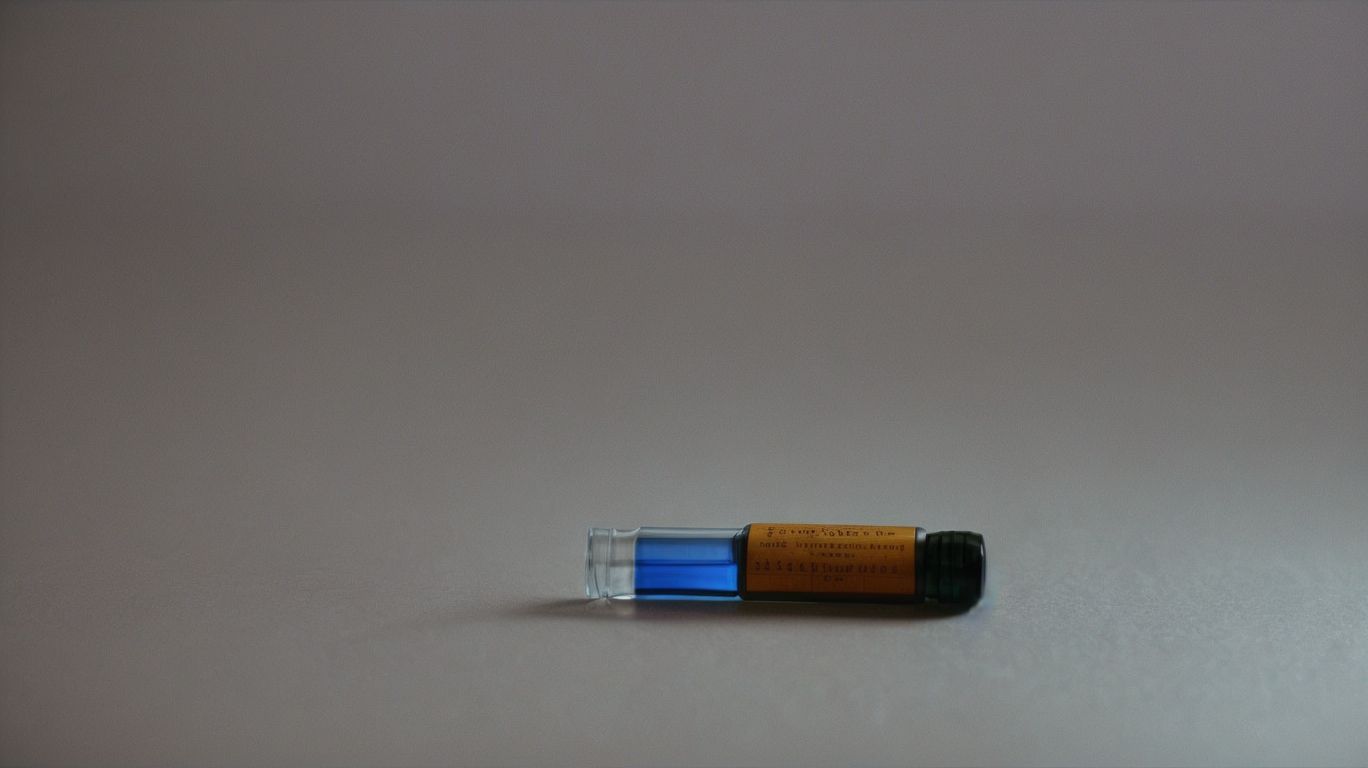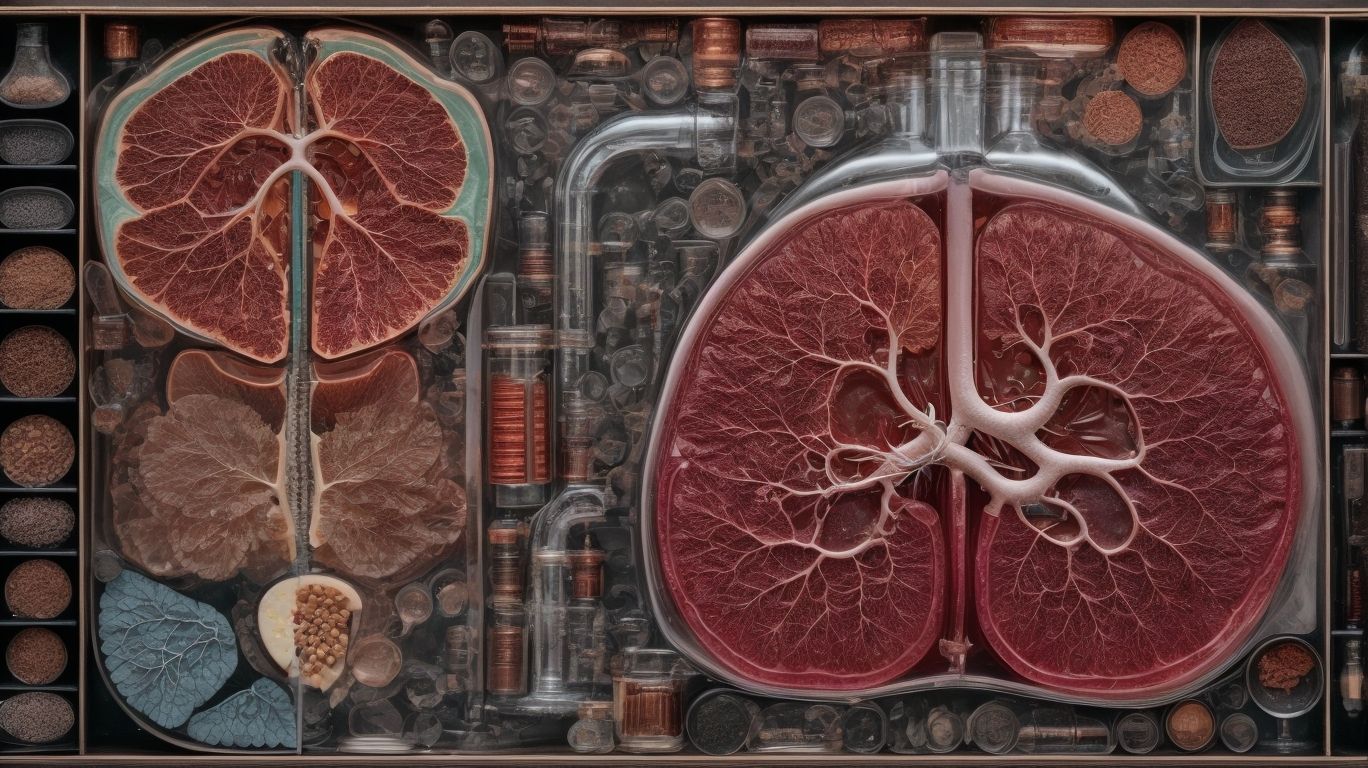Ethylene glycol toxicity, also known as ethylene glycol poisoning, is a potentially life-threatening condition caused by the ingestion or inhalation of ethylene glycol, a toxic chemical found in many household and industrial products. According to a study published in the Journal of Emergency Medicine, ethylene glycol is the most common cause of poisoning deaths in the United States. It is essential to be aware of the dangers of ethylene glycol toxicity and how to prevent it.
Ethylene glycol toxicity happens when the chemical is ingested or inhaled into the body. This usually occurs through accidental ingestion, inhalation of fumes, or skin contact in industrial settings. It can also happen due to intentional ingestion as a form of self-harm. Once ingested, the body metabolizes ethylene glycol into toxic by-products that can cause severe damage to various organs, including the kidneys, brain, and heart.
Symptoms of ethylene glycol toxicity can vary depending on the route of exposure. Ingestion can cause symptoms such as nausea, vomiting, abdominal pain, and difficulty breathing. Inhalation can lead to coughing, chest tightness, and shortness of breath. In severe cases, it can cause loss of consciousness, seizures, and even death.
Diagnosis of ethylene glycol toxicity is based on a combination of symptoms, exposure history, and laboratory tests. Blood and urine tests can detect the presence of the toxic by-products of ethylene glycol metabolism. Imaging tests, such as X-rays and CT scans, can also help identify any physical damage to internal organs.
The treatment for ethylene glycol toxicity involves supportive care and the administration of an antidote, ethanol or fomepizole, to prevent the metabolism of ethylene glycol into toxic by-products. Other treatments, such as dialysis or intravenous fluids, may be necessary to remove the toxic by-products from the body and support organ function.
Long-term effects of ethylene glycol toxicity can include permanent organ damage, chronic health issues, and even death. Early diagnosis and prompt treatment are crucial in minimizing the potential long-term effects.
To prevent ethylene glycol toxicity, it is essential to be aware of products that contain this chemical and take precautions to avoid exposure. Common products that contain ethylene glycol include antifreeze, windshield wiper fluid, and brake fluid. It is essential to handle these products with caution and store them out of reach of children. In industrial settings, proper safety protocols and protective gear should be used to avoid exposure. In case of accidental exposure, seek immediate medical attention.
Key Takeaways:
What is Ethylene Glycol Toxicity?

Photo Credits: Chemicalglossary.Net by Juan Robinson
Ethylene glycol toxicity, also known as ethylene glycol poisoning, is a condition caused by the ingestion or exposure to ethylene glycol, a chemical commonly found in antifreeze and other industrial products. This chemical can have harmful effects on the body, as it forms toxic byproducts when metabolized, leading to severe damage to the kidneys, liver, and nervous system.
Symptoms of ethylene glycol toxicity may include vomiting, abdominal pain, confusion, and even coma. It is crucial to seek immediate medical attention if you suspect someone has been exposed to or ingested ethylene glycol, as the condition can be fatal if left untreated.
How Does Ethylene Glycol Toxicity Happen?

Photo Credits: Chemicalglossary.Net by Jeremy Flores
Ethylene glycol toxicity occurs in several stages, each with specific symptoms and effects on the body. Here is a list of steps explaining how ethylene glycol toxicity happens:
- Ingestion: Ethylene glycol is commonly found in antifreeze and other automotive products.
- Metabolism: After ingestion, the body metabolizes ethylene glycol into toxic byproducts, including glycolic acid and oxalic acid.
- Organ damage: These toxic byproducts can cause damage to the kidneys, brain, liver, and other organs.
- Acidosis: The accumulation of acidic byproducts can lead to metabolic acidosis, disrupting the body’s pH balance.
- Antifreeze poisoning symptoms: Symptoms may include nausea, vomiting, abdominal pain, confusion, seizures, and kidney failure.
- Treatment: Immediate medical intervention is crucial to prevent severe complications or death. Treatment often involves administering antidotes and supportive care.
What Are the Symptoms of Ethylene Glycol Toxicity?

Photo Credits: Chemicalglossary.Net by Ralph Jones
The symptoms of ethylene glycol toxicity can differ depending on the stage of poisoning. In the initial stage, there may be indications of nausea, vomiting, abdominal pain, and changes in mental status. As the toxicity advances, there may be damage to the kidneys, abnormalities in the heart, and neurological symptoms like seizures and coma. If you suspect ethylene glycol poisoning, it is crucial to seek medical attention right away. Timely treatment can aid in preventing severe complications and improving outcomes.
What Are the Symptoms of Ingestion?
The symptoms of ingestion of ethylene glycol toxicity can vary depending on the level of exposure and the amount ingested. Some common symptoms include:
- abdominal pain
- nausea
- vomiting
- diarrhea
In severe cases, individuals may experience:
- difficulty breathing
- seizures
- and even coma
Prompt medical attention is crucial if ingestion is suspected. To prevent ingestion, it is important to store products containing ethylene glycol out of reach of children and pets. Pro-tip: If you suspect ethylene glycol ingestion, do not induce vomiting as it can worsen the situation. Seek immediate medical help instead.
What Are the Symptoms of Inhalation?
Inhaling ethylene glycol can result in a variety of symptoms. These may include respiratory distress, coughing, chest pain, and irritation of the nose, throat, and lungs. In more severe cases, it can even lead to lung damage and pulmonary edema, which is the buildup of fluid in the lungs. If you experience any of these symptoms after inhaling ethylene glycol, it is crucial to seek immediate medical attention.
To prevent inhalation, it is important to handle ethylene glycol in a well-ventilated area and utilize personal protective equipment, such as masks. Proper storage and disposal of products containing ethylene glycol can also greatly reduce the risk of exposure. Always prioritize safety and consult with a healthcare professional for further guidance.
How is Ethylene Glycol Toxicity Diagnosed?

Photo Credits: Chemicalglossary.Net by Douglas Thomas
Diagnosing ethylene glycol toxicity involves a combination of clinical evaluation, laboratory tests, and imaging studies. Below are the typical steps taken in the diagnosis of this condition:
- Medical history: The doctor will inquire about any exposure to ethylene glycol or products containing it.
- Physical examination: The doctor will look for any signs of toxicity, such as neurological deficits or kidney dysfunction.
- Laboratory tests: Blood tests can measure the levels of ethylene glycol and its toxic metabolites.
- Urinalysis: Testing urine for the presence of calcium oxalate crystals, which are indicative of ethylene glycol toxicity.
- Arterial blood gas analysis: This test can reveal metabolic acidosis, a common finding in cases of ethylene glycol poisoning.
- Imaging studies: X-rays or CT scans may be performed to evaluate the extent of kidney damage caused by ethylene glycol.
What is the Treatment for Ethylene Glycol Toxicity?

Photo Credits: Chemicalglossary.Net by Matthew Green
Treatment for ethylene glycol toxicity involves a combination of both supportive care and specific antidotes. It is crucial to seek prompt medical attention in order to effectively address this condition. Some key measures that are involved in the treatment process include the following:
- Stabilization: This involves ensuring that the patient receives adequate oxygenation, maintains proper hydration, and addresses any electrolyte imbalances.
- Antidote administration: The administration of either fomepizole or ethanol can help inhibit the metabolism of ethylene glycol into toxic byproducts.
- Enhanced elimination: In some cases, measures such as hemodialysis or hemoperfusion may be necessary to remove the toxin from the bloodstream at a faster rate.
- Monitoring: It is important to regularly monitor vital signs, renal function, and acid-base balance in order to properly track the patient’s progress.
- Supportive care: Symptomatic treatment may also be necessary to address any additional complications, such as seizures, respiratory distress, or cardiovascular issues.
Early intervention and adherence to treatment guidelines are crucial for improving the prognosis of ethylene glycol toxicity.
What is the Antidote for Ethylene Glycol Poisoning?
The antidote for ethylene glycol poisoning is either ethanol or fomepizole. These substances work by blocking the metabolism of ethylene glycol in the liver, preventing the formation of toxic byproducts. In cases where fomepizole is not available or contraindicated, ethanol is commonly used. Both antidotes are administered intravenously and should be given as soon as possible after ingestion of ethylene glycol. It is important to note that only healthcare professionals should administer these antidotes under medical supervision. Prompt treatment with the antidote is crucial in preventing severe complications and saving lives.
What Other Treatments Are Available?
When it comes to treating ethylene glycol toxicity, there are several options available. In addition to the antidote, fomepizole, other treatments can be used to support the patient’s condition. One common treatment is hemodialysis, which helps remove the toxic substance from the blood. Supportive care, such as intravenous fluids and medications to manage symptoms, is also important in the treatment process.
It is crucial for individuals who suspect ethylene glycol toxicity to seek immediate medical attention for proper diagnosis and treatment. A pro-tip: Always store chemicals, including those containing ethylene glycol, in a safe and secure location to prevent accidental ingestion.
When it comes to treating ethylene glycol toxicity, there are also other treatments available that can support the patient’s condition. These may include hemodialysis to remove the toxic substance from the blood, as well as supportive care with intravenous fluids and medications to manage symptoms. It is important for individuals who suspect ethylene glycol toxicity to seek immediate medical attention for proper diagnosis and treatment. A helpful tip: Always store chemicals, including those containing ethylene glycol, in a safe and secure location to prevent accidental ingestion.
What Are the Long-term Effects of Ethylene Glycol Toxicity?

Photo Credits: Chemicalglossary.Net by Russell Baker
The long-term effects of ethylene glycol toxicity can have serious consequences on the body. One common result is kidney damage, which can present with symptoms ranging from decreased urine output to kidney failure. The nervous system can also be affected, leading to neurological issues such as seizures, coma, and even death. In addition, the cardiovascular system may be impacted, resulting in heart problems and high blood pressure. Liver damage is another potential long-term effect, with symptoms that may include jaundice and liver failure.
It is crucial to seek immediate medical attention if exposed to ethylene glycol in order to prevent these long-term complications.
How Can Ethylene Glycol Toxicity Be Prevented?

Photo Credits: Chemicalglossary.Net by Joseph Lewis
Preventing ethylene glycol toxicity involves taking specific precautions to avoid exposure to this hazardous substance. Here are some steps to consider:
- Avoid using products that contain ethylene glycol, such as antifreeze and certain household cleaning agents.
- Store ethylene glycol-containing products securely, out of reach of children and pets.
- Dispose of ethylene glycol products properly, following local regulations.
- When handling or using ethylene glycol, make sure to wear protective clothing, gloves, and goggles.
- Ensure proper ventilation when working with products that contain ethylene glycol.
- Regularly check for leaks in vehicles and equipment that use ethylene glycol-based coolants.
By following these steps, you can greatly reduce the risk of ethylene glycol toxicity. Stay safe and protect yourself and others from this dangerous substance.
What Products Contain Ethylene Glycol?
A variety of products contain ethylene glycol, a harmful substance. Some common household items include antifreeze, windshield washer fluid, brake fluid, and certain solvents. Ethylene glycol can also be found in personal care products such as cosmetics, lotions, and shampoos. It is crucial to carefully read labels and be aware of the ingredients in the products you use. To avoid exposure to ethylene glycol, make sure to safely store products containing this substance, handle them with caution, and dispose of them properly. If you have any concerns about potential exposure to ethylene glycol, it is always wise to consult with a healthcare professional or poison control center.
What Precautions Can Be Taken to Avoid Exposure?
To avoid exposure to ethylene glycol, it is important to take certain precautions. Here are some steps you can follow to prevent exposure:
- Check product labels: Always read the labels of products such as antifreeze, automotive fluids, and solvents to check for the presence of ethylene glycol.
- Store products safely: Keep products containing ethylene glycol in a safe place that is out of reach of children and pets. Store them away from food and drinks.
- Handle with care: When using products containing ethylene glycol, carefully follow the instructions provided by the manufacturer and wear protective gloves and goggles if necessary.
- Proper disposal: Dispose of products containing ethylene glycol according to local regulations. Do not pour them down the drain or throw them in the trash.
- Educate yourself: Educate yourself about the potential dangers of ethylene glycol and share this information with others to raise awareness.
By following these precautions, you can minimize the risk of exposure to ethylene glycol and protect yourself and those around you.
Frequently Asked Questions
What is ethylene glycol poisoning?
Ans: Ethylene glycol poisoning is a serious and potentially fatal condition that occurs when a person ingests this toxic chemical, commonly found in products such as antifreeze, de-icing solutions, and household cleaners.
What are the symptoms of ethylene glycol poisoning?
Ans: Symptoms may include nausea, vomiting, convulsions, stupor, coma, slurred speech, myoclonic jerks, and brain dysfunction. In severe cases, it can lead to organ failure, metabolic acidosis, and shock.
What should I do if I suspect someone has ingested ethylene glycol?
Ans: Seek immediate medical help and do not induce vomiting unless instructed by a healthcare professional. Before calling emergency services, gather information such as the person’s age, weight, and condition, the name and amount of the product ingested, and any corresponding symptoms.
What is the three-stage theory of ethylene glycol poisoning?
Ans: The three-stage theory proposes that the toxicological effects of ethylene glycol poisoning occur in three stages: the CNS depressant stage, the cardiopulmonary stage, and the renal stage.
How is ethylene glycol poisoning diagnosed and treated?
Ans: Prompt diagnosis is important and can be done through a combination of history and physical examination, laboratory tests, and imaging studies. Treatment may include fomepizole, a newer agent with a specific indication for ethylene glycol poisoning, which can minimize renal impairment and decrease morbidity.
What can be done to prevent ethylene glycol poisoning?
Ans: Ethylene glycol poisoning can be prevented by keeping these products out of reach of children and pets, properly labeling containers, and disposing of them safely. It is also important for healthcare professionals to educate patients about the dangers of ingesting this toxic chemical.
